Page Not Found
Page not found. Your pixels are in another canvas. Read more
A list of all the posts and pages found on the site. For you robots out there is an XML version available for digesting as well.
Page not found. Your pixels are in another canvas. Read more
I am an assistant professor of Data Science and director of the News Web and Social Media (NEWS) research lab at William & Mary (W&M). Before joining W&M, I was a postdoc at the Observatory on Social Media (OSoMe), Indiana University, Bloomington. And before that, a research assistant and member of the Web Science and Digital Libraries (WS-DL) Research Group at Old Dominion University (ODU). I’m a Computer Science graduate of ODU (PhD: 2020, MS: 2014) and Elizabeth City State University (BS: 2011).
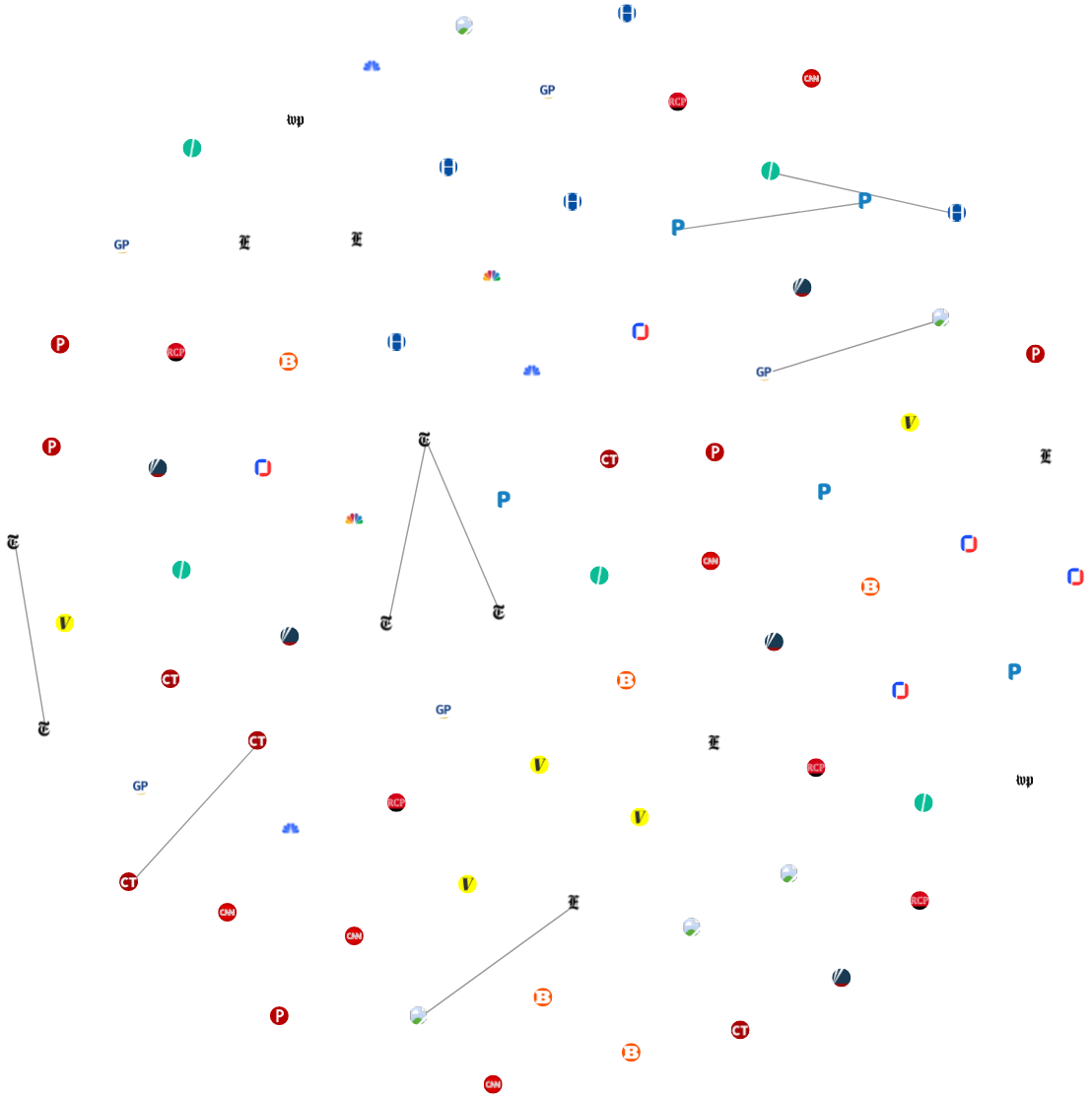 | 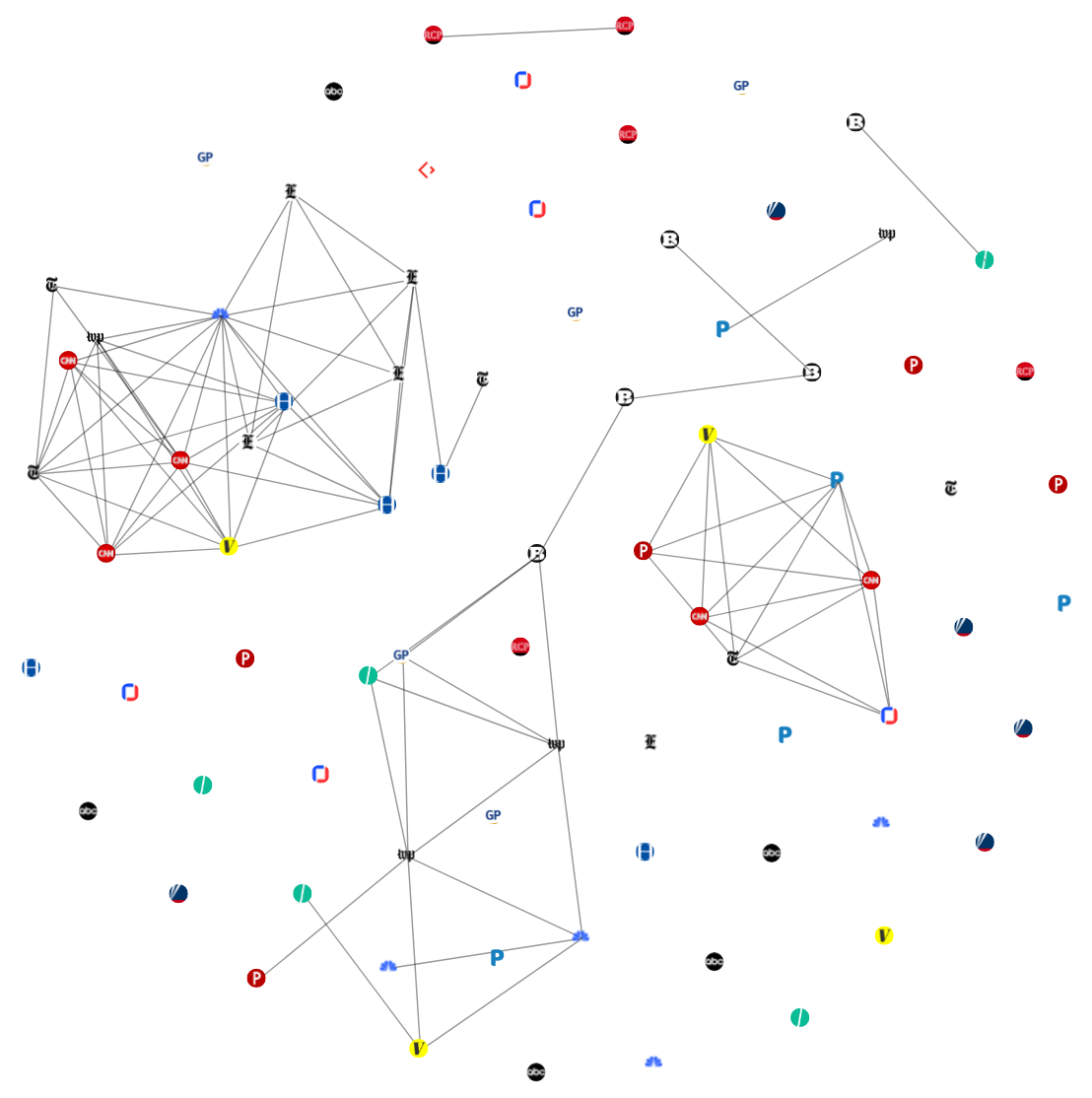 | 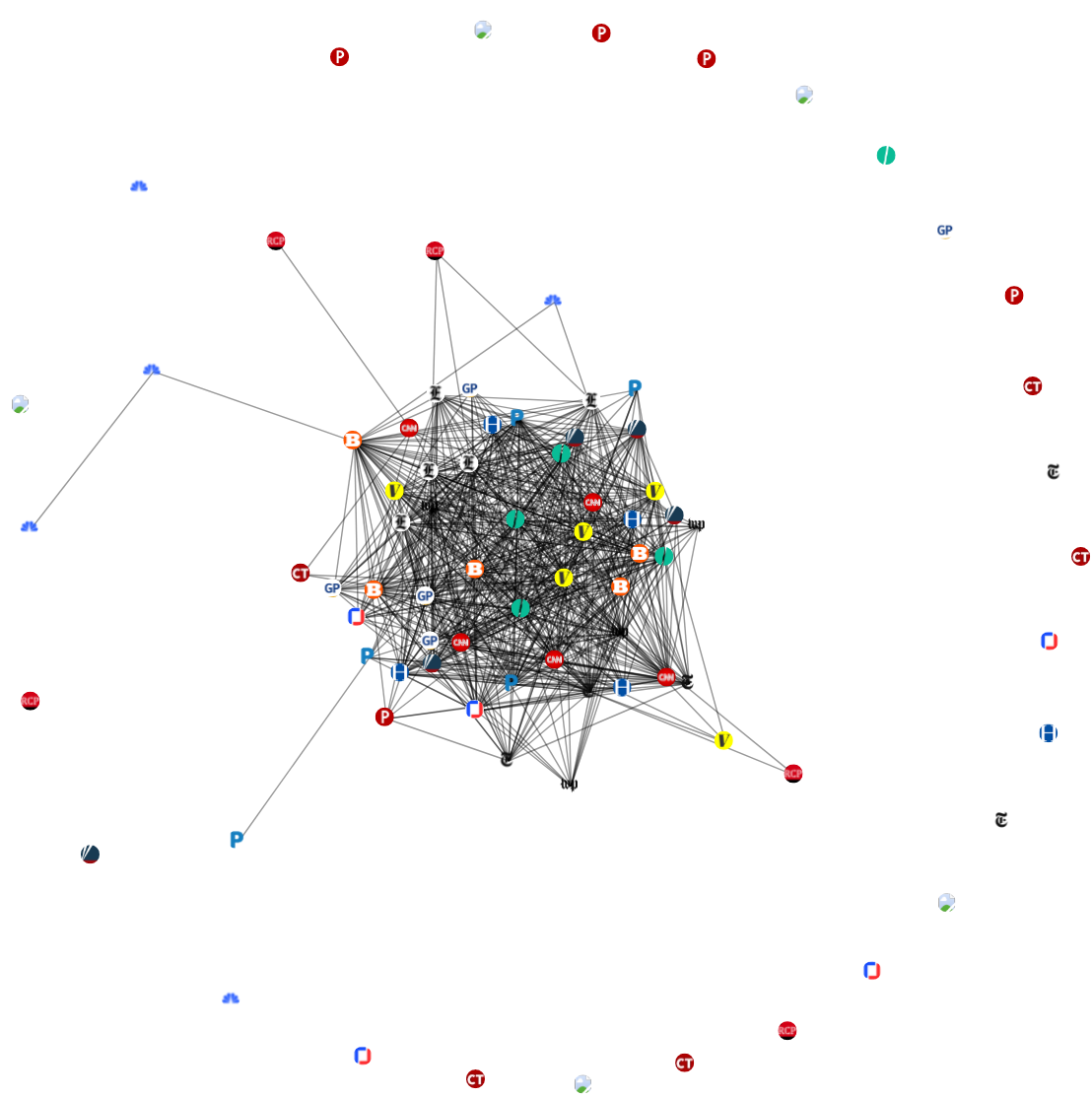 |
My research interests include Social media/network analysis, computational social science, web/data science, web archiving, (local)news, and NLP.
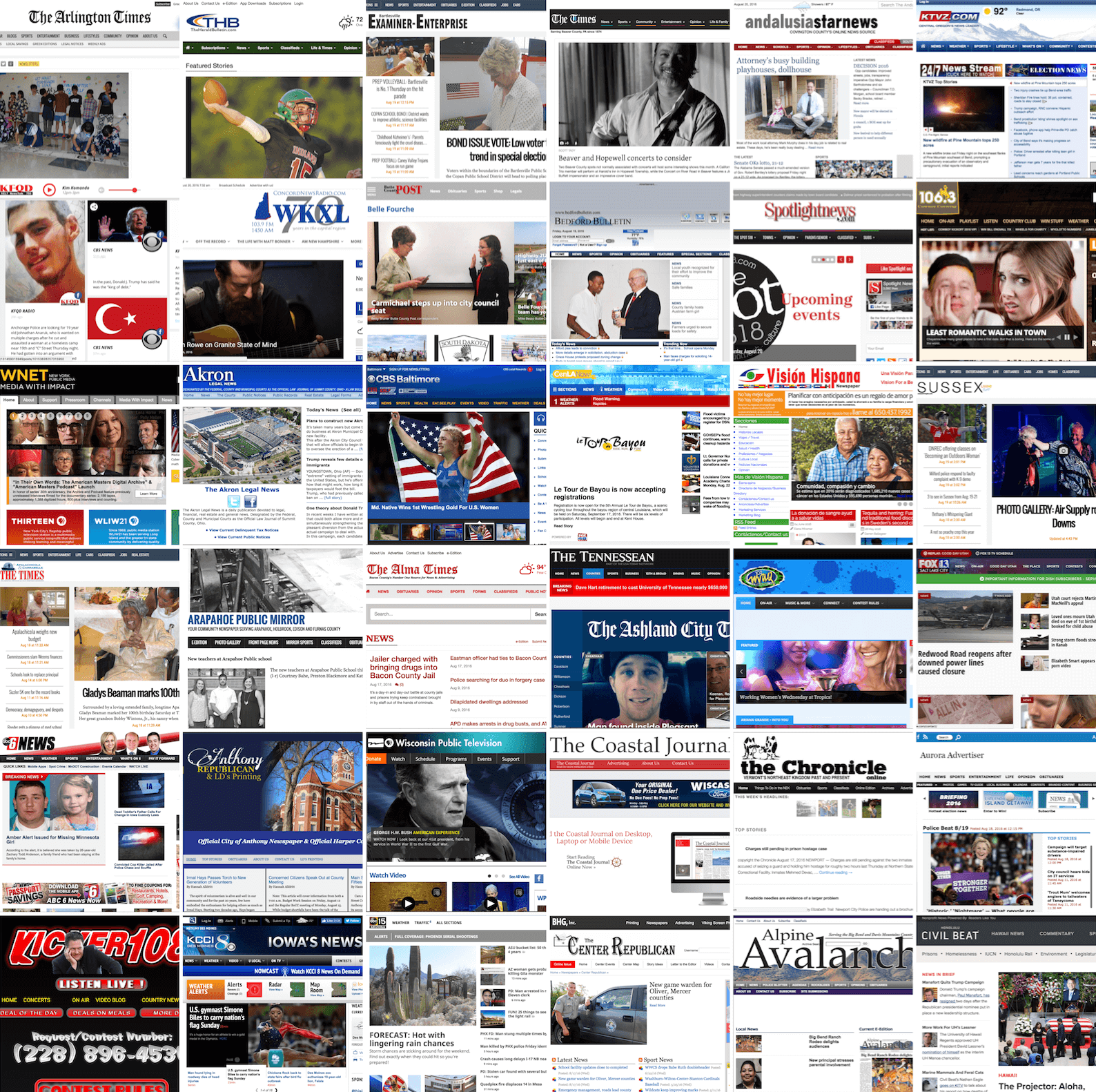 | 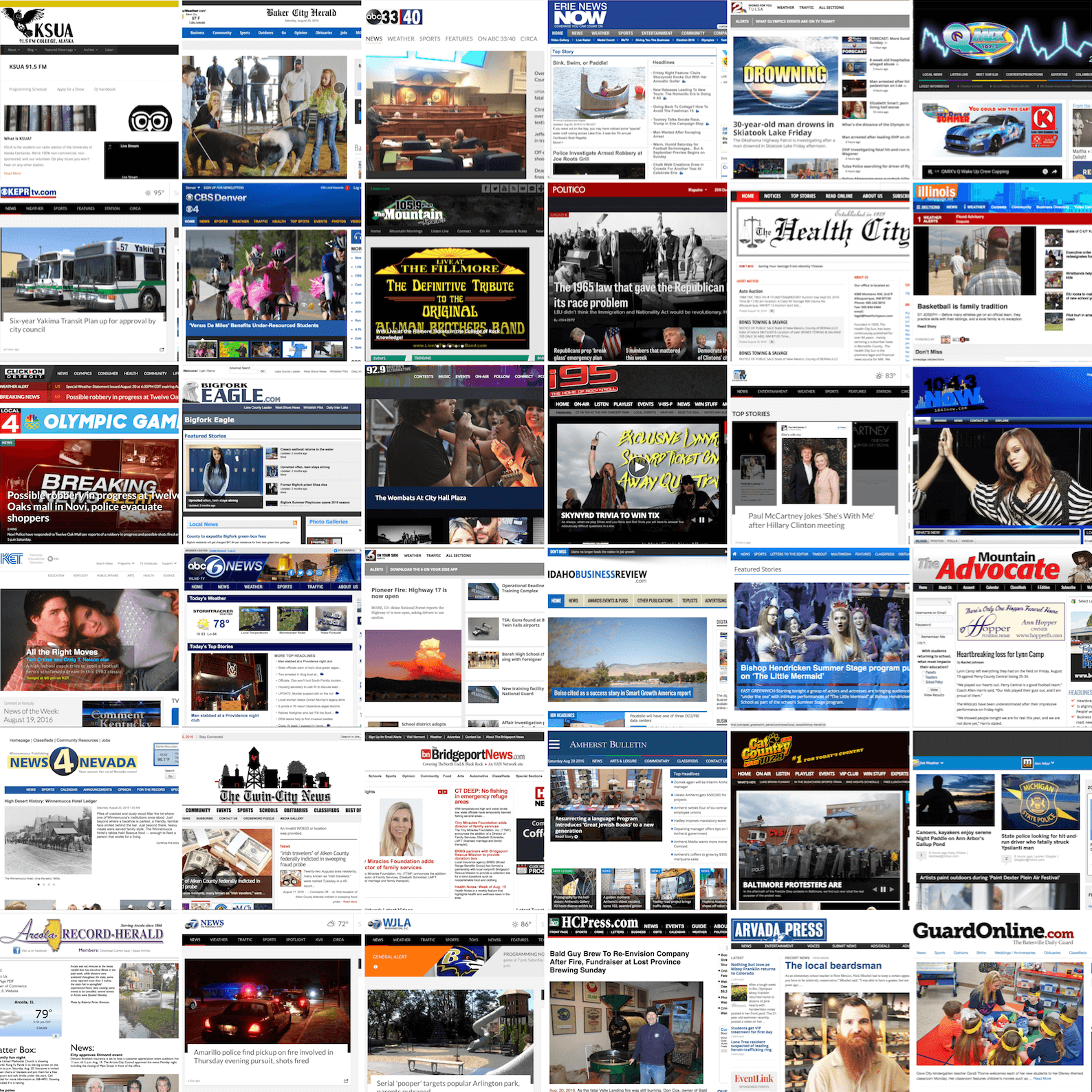 | 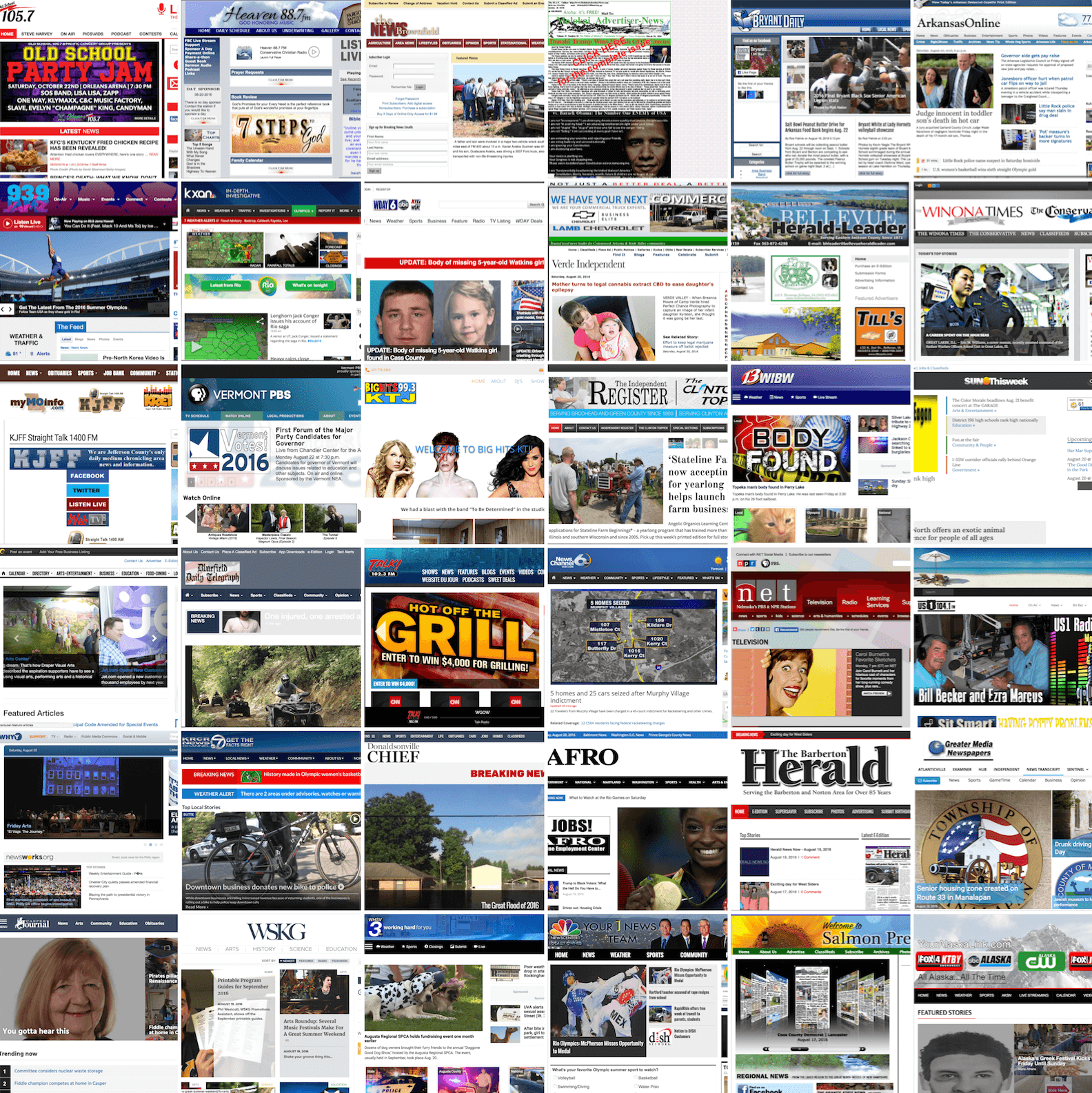 | 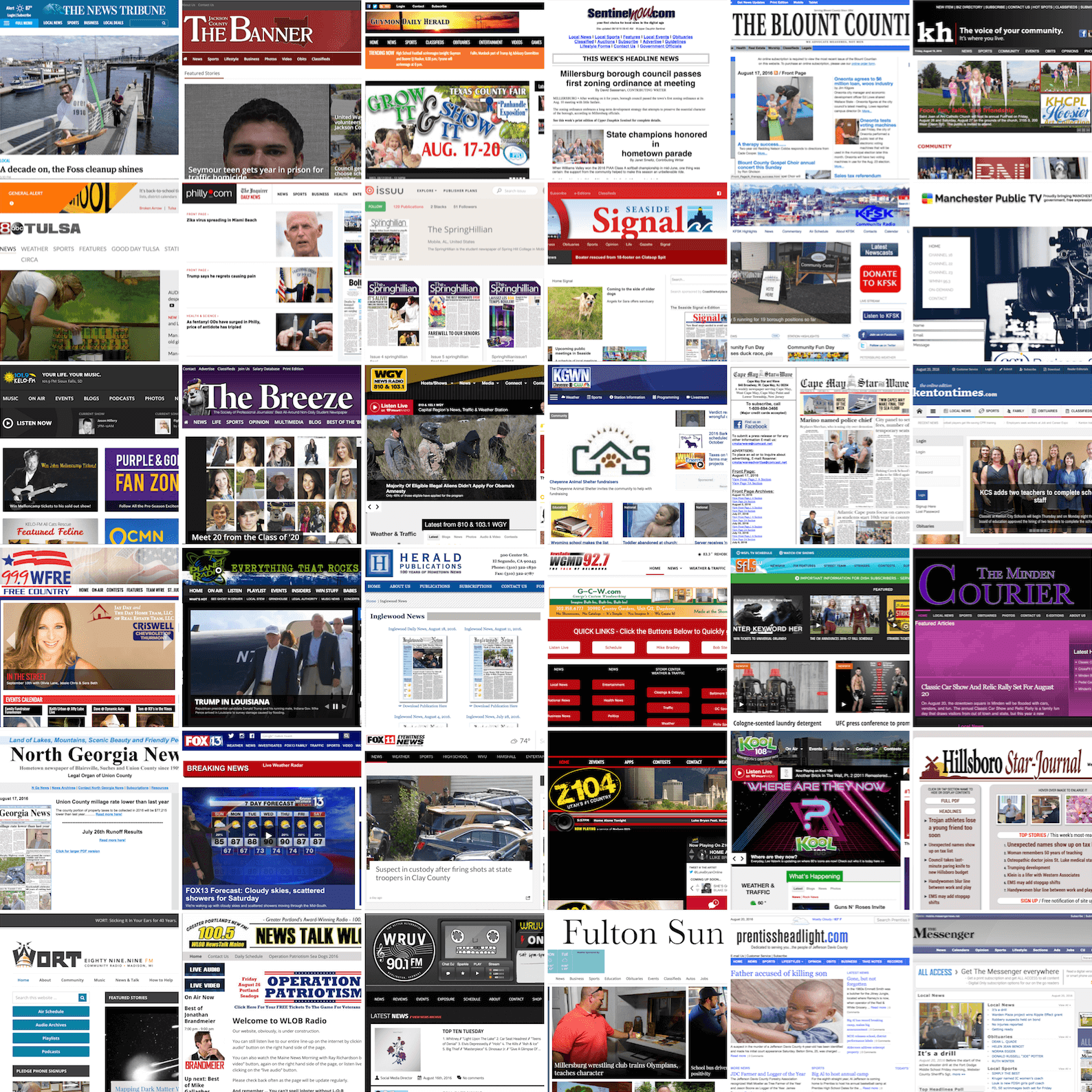 |  |  |  |  |  |  |  |  |













Dr. Alexander C. Nwala is an assistant professor of Data Science at William and Mary (W&M). Before joining W&M, he was a postdoc at the Observatory on Social Media, Indiana University, Bloomington, with a research focus on dis/misinformation diffusion, detection, and countering of online manipulation. He received his PhD in Computer Science at Old Dominion University and has contributed multiple important tools and datasets to the data/web science, social media, (local) news, and web archiving communities. Dr. Nwala has taught Computer Science courses to High School, Undergraduate, and Graduate students and has collaborated across disciplines and institutions, including with computer scientists/journalists at IU, archivists at the National Library of Medicine, and lawyers at Harvard. And his research has been published in multiple peer-reviewed Journals and Conferences including the ACM/IEEE JCDL, ACM HyperText, iPres, and ICWSM.
This is a page not in th emain menu Read more
Published:
@storygraphbot can track multiple stories for multiple days & travel back in time.
— Alexander C. Nwala (@acnwala) May 10, 2021
E.g.,
Georgia Senate Elections/Storming of the US Capitol (3 days): https://t.co/OdpFf9UA6R
2020 US Elections, part 1 (5 days) : https://t.co/L4wbsA9HP3
part 2 (2 days): https://t.co/pPi4QdpECg pic.twitter.com/xDMIeighsz
Published:
I join the chorus to say 2020 was a year like no other, and shaped by three historic events: the Coronavirus pandemic, the protests surrounding the Black Lives Matter movement, and the US Presidential elections. According to StoryGraph, in 2018, the top news story was the Kavanaugh hearings. In 2019, it was the Mueller Report. Similar to 2018 and 2019, we analyzed all news stories collected by StoryGraph at 10-minute intervals every day in 2020, to identify the top news stories of 2020. Recall how we identify top news stories, explained briefly in 365 dots in 2019 and in detail by the tech report, and repeated here for convenience.
Published:
"My report card to my mother," summarizes the trajectory of my PhD research over 6 years at @ODU @WebSciDL as I join @OSoMe_IU @ Indiana University @IUBloomington as a post-doc working with Dr. Filippo Menczer
— Alexander C. Nwala (@acnwala) September 28, 2020
Blog: https://t.co/w7H9r0454H
Dissertation: https://t.co/r95gkiXf66 pic.twitter.com/dAytlbt2Br
Published:
2/3: Unlike the DNC story, the RNC story competed for attention with other stories such as
— Alexander C. Nwala (@acnwala) September 1, 2020
Kellyanne Conway's White House exit and George Conway's @ProjectLincoln withdrawal pic.twitter.com/djZcCeEfm1
Published:
@WebSciDL @storygraphbot is 3 years old!
— Alexander C. Nwala (@acnwala) August 10, 2020
3 years reading, generating news similarity graphs, & quantifying attention of news stories.
Take a look at the past and future: https://t.co/xEfgx9jhll
Highlights: https://t.co/k16XqH5POw
Happy Birthday @storygraphbot
Published:
Began as a media manipulation experiment. It's been running since Aug 8, 2017. Glad we didn't switch it off.
— Alexander C. Nwala (@acnwala) March 25, 2020
See also:
- https://t.co/QAldTFQhfN
- https://t.co/hjF6EsPLOg
cc @WebSciDL @stanfordnlp @kanarinka @naeemulhassan @aleszubajak @wihbey @mjnelson7 @aehickerson @acbeers
Published:
.@WebSciDL some findings from 365 dots in 2019 (top news stories of 2019 according to StoryGraph)
— Alexander C. Nwala (@acnwala) January 6, 2020
Blog: https://t.co/QAldTFQhfN
Vis: https://t.co/193khGdEFQ
Website: https://t.co/kHuKZA47xh
* The top stories clustered around: Mueller Report, impeachment inquiry, & Dem debates pic.twitter.com/GpB84ewrwO
Published:
standard ngram generators split multi-word proper nouns, sumgram avoids this by applying 2 algorithms:
— Alexander C. Nwala (@acnwala) September 9, 2019
- pos_glue_split_ngrams:
utilizes POS labels from @stanfordnlp CoreNLP Server (https://t.co/n2nOelViqb) to identify proper nouns of type:
NNP [IN|CC]? NNP ([IN|CC]? NNP)*
Published:
.@WebSciDL @JCDLConf Freshly minted JCDL 2019 Trip Report:https://t.co/qFPvGuumgq#jcdl2019 #webarchiving
— Alexander C. Nwala (@acnwala) June 6, 2019
cc @profdownie @ACMDL @TheOfficialACM @azaroth42 @pmhswe
Published:
.@WebSciDL The changes to the Twitter layout goes beyond the cosmetic new looks of the icons into a more obscure DOM with fewer semantic attributes.https://t.co/mLNTpMl8b1
— Alexander C. Nwala (@acnwala) May 6, 2019
Published:
.@WebSciDL 365 dots in 2018 highlights the top news stories everyday in 2018,
— Alexander C. Nwala (@acnwala) March 6, 2019
and the top 10 news stories of 2018.
See our blogpost about the transparent graph-theoretic method @storygraphbot uses to quantify the magnitude of news stories:https://t.co/hjF6EsyaWI pic.twitter.com/ILqn91lVLT
Published:
Thanks @moffattchristie & @nlm_news for letting me share my research outline (with @phonedude_mln & @weiglemc) about generating seeds for stories and events for web archive collections: https://t.co/H8FIboxWGV
— Alexander C. Nwala (@acnwala) August 14, 2018
cc @WebSciDL @archiveitorg @permacc #webarchiving
Published:
.@ACMHT missed the 2018 HyperText and Social Media conference?
— Alexander C. Nwala (@acnwala) July 19, 2018
Here's a trip report for you:https://t.co/w5174Z3NRW#acmht18 #webarchiving #MachineLearning #socialmedia
Published:
.@jcdl2018 @WebSciDL trip reports from 2017-2009:https://t.co/feBk9HwQ2Dhttps://t.co/kU42Rpxbdyhttps://t.co/P46cW0Xhszhttps://t.co/iI6FPJtsjChttps://t.co/f1OmPx6kuqhttps://t.co/S0AI9n8udShttps://t.co/rWAgyXGcvjhttps://t.co/UB9Y06zlEwhttps://t.co/x86h4dPMPG#webarchiving
— Alexander C. Nwala (@acnwala) June 11, 2018
Published:
.@WebSciDL Media manipulation research with Dr. Rob Faris:https://t.co/WdFU4jLP0V cc @datasociety @polbots @katestarbird.Thanks @BKCHarvard pic.twitter.com/lVxghHpI69
— Alexander C. Nwala (@acnwala) August 27, 2017
Published:
.@jcdl2017 @WebSciDL @jcdl2018, highlights of JCDL 2017, now available in my trip report: https://t.co/feBk9HwQ2D #jcdl2017 #webarchiving
— Alexander C. Nwala (@acnwala) June 29, 2017
Published:
.@WebSciDL A survey of 5 boilerplate removal methods: https://t.co/T2VrK9zvgw. Is your favorite method included? pic.twitter.com/IXuh6uIiNK
— Alexander C. Nwala (@acnwala) March 21, 2017
Published:
Introducing the Local Memory Project (@localmem) https://t.co/OOJMRmEcV8 cc @WebSciDL @HarvardLIL @abziegler @this_phillips @moffattchristie
— Alexander C. Nwala (@acnwala) November 16, 2016
Published:
Fellowship at Harvard Library Innovation Lab (@HarvardLIL) Trip Report: https://t.co/WfXwZNMlHC. Thanks @HarvardLIL pic.twitter.com/JOhJ1sqPjo
— Alexander C. Nwala (@acnwala) September 9, 2016
Published:
JCDL 2016 main conference trip report - first person perspective: https://t.co/kU42Rpxbdy #jcdl2016
— Alexander C. Nwala (@acnwala) June 23, 2016
Published:
.@ianmilligan1 here is the archives unleashed trip report (in progress): https://t.co/oz9vSK8r27 #hackarchives
— Alexander C. Nwala (@acnwala) March 10, 2016
Published:
Short description of portfolio item number 1 Read more
Read more
Short description of portfolio item number 2  Read more
Read more





















































Published:
This is a description of your talk, which is a markdown files that can be all markdown-ified like any other post. Yay markdown!
Published:
This is a description of your conference proceedings talk, note the different field in type. You can put anything in this field.
Catalog Description: The Web has fundamentally changed how we learn, play, communicate, and work. Its influence has become so monumental that it has given birth to a new science: Web Science, or the science of decentralized information structures. Although Web Science is interdisciplinary by nature, this course will be focusing mainly on the computing aspects of the Web: how it works, how it is used, and how it can be analyzed. We will examine a number of topics including: web architecture, web characterization and analysis, web archiving, Web 2.0, social networks, collective intelligence, search engines, web mining, information diffusion on the web, and the Semantic Web. Prerequisites: Standing as an undergraduate senior, graduate student, or approval from the instructor. Read more
Catalog Description: The Web has fundamentally changed how we learn, play, communicate, and work. Its influence has become so monumental that it has given birth to a new science: Web Science, or the science of decentralized information structures. Although Web Science is interdisciplinary by nature, this course will be focusing mainly on the computing aspects of the Web: how it works, how it is used, and how it can be analyzed. We will examine a number of topics including: web architecture, web characterization and analysis, web archiving, Web 2.0, social networks, collective intelligence, search engines, web mining, information diffusion on the web, and the Semantic Web. Prerequisites: Standing as an undergraduate senior, graduate student, or approval from the instructor. Read more
Catalog Description: The Web has fundamentally changed how we learn, play, communicate, and work. Its influence has become so monumental that it has given birth to a new science: Web Science, or the science of decentralized information structures. Although Web Science is interdisciplinary by nature, this course will be focus mainly on the computing aspects of the Web: how it works, how it is used, and how it can be analyzed. We will examine several topics including: web architecture, web characterization and analysis, web archiving, Web 2.0, social networks, (creating/detecting) social bots, collective intelligence, search engines, web mining, information diffusion on the web, Semantic Web, etc. Read more
Catalog Description: Network Science – Networks are everywhere in our lives: networks of friends on social media, the Web, networks of neurons in our brains, etc. It’s amazing that such a simple representation — dots and lines — can capture a variety of relationships, whether simple or complex. In this course, we will survey a broad range of fundamental topics in network science, relevant to students from data/computer science and engineering, informatics, business, biology, physics, statistics, social sciences, etc. For example, we will explore the properties of social networks and the key role of hubs, and how directed and weighted networks affect the spread of information and misinformation in social media. These topics are important and useful in many job sectors from marketing to technology, management to design, and from biology to the arts and humanities. Read more
Catalog Description: The Web has fundamentally changed how we learn, play, communicate, and work. Its influence has become so monumental that it has given birth to a new science: Web Science, or the science of decentralized information structures. Although Web Science is interdisciplinary by nature, this course will be focus mainly on the computing aspects of the Web: how it works, how it is used, and how it can be analyzed. We will examine several topics including: web architecture, web characterization and analysis, web archiving, Web 2.0, social networks, (creating/detecting) social bots, collective intelligence, search engines, web mining, information diffusion on the web, Semantic Web, etc. Read more
Catalog Description: Networks are everywhere in our lives: networks of friends on social media, the Web, networks of neurons in our brains, etc. It’s amazing that such a simple representation — dots and lines — can capture a variety of relationships, whether simple or complex. In this course, we will survey a broad range of fundamental topics in network science, relevant to students from data/computer science and engineering, informatics, business, biology, physics, statistics, social sciences, etc. For example, we will explore the properties of social networks and the key role of hubs, and how directed and weighted networks affect the spread of information and misinformation in social media. These topics are important and useful in many job sectors from marketing to technology, management to design, and from biology to the arts and humanities. Read more
Catalog Description: Networks are everywhere in our lives: networks of friends on social media, the Web, networks of neurons in our brains, etc. It’s amazing that such a simple representation — dots and lines — can capture a variety of relationships, whether simple or complex. In this course, we will survey a broad range of fundamental topics in network science, relevant to students from data/computer science and engineering, informatics, business, biology, physics, statistics, social sciences, etc. For example, we will explore the properties of social networks and the key role of hubs, and how directed and weighted networks affect the spread of information and misinformation in social media. These topics are important and useful in many job sectors from marketing to technology, management to design, and from biology to the arts and humanities. Read more
Catalog Description: This course provides an introduction to critical, ethical, and moral issues surrounding data and society. It blends social and technological perspectives on data with ethics, policy, and case examples. We will explore a broad range of topic — from Algorithmic Bias to Interpretability in Machine Learning — to help students develop a workable understanding of current ethical issues in data science. Moreover, the course examines the ethical questions and dilemmas that arise in the development of technologies that affect the lives of peoples. Students will debate issues surrounding bias, privacy, surveillance, discrimination, and transparency, throughout the development life cycle of applications – from dataset generation to model development and evaluation. Read more
Catalog Description: The Web has fundamentally changed how we learn, play, communicate, and work. Its influence has become so monumental that it has given birth to a new science: Web Science, or the science of decentralized information structures. Although Web Science is interdisciplinary by nature, this course will be focus mainly on the computing aspects of the Web. Provides an overview of the World Wide Web and associated decentralized information structures, focusing mainly on the computing aspects of the Web: how it works, how it is used, and how it can be analyzed. Students will examine a number of topics including: web architecture, web characterization and analysis, web archiving, Web 2.0, social networks, (creating/detecting) social bots, collective intelligence, search engines, web mining, information diffusion on the web, Semantic Web, etc. Read more
Catalog Description: The Web has fundamentally changed how we learn, play, communicate, and work. Its influence has become so monumental that it has given birth to a new science: Web Science, or the science of decentralized information structures. Although Web Science is interdisciplinary by nature, this course will be focus mainly on the computing aspects of the Web. Provides an overview of the World Wide Web and associated decentralized information structures, focusing mainly on the computing aspects of the Web: how it works, how it is used, and how it can be analyzed. Students will examine a number of topics including: web architecture, web characterization and analysis, web archiving, Web 2.0, social networks, (creating/detecting) social bots, collective intelligence, search engines, web mining, information diffusion on the web, Semantic Web, etc. Read more